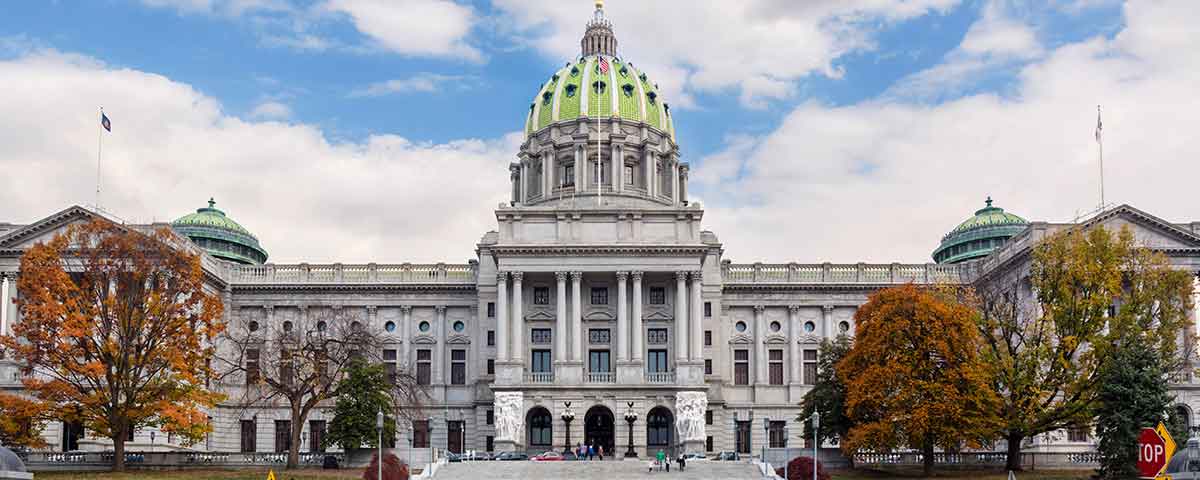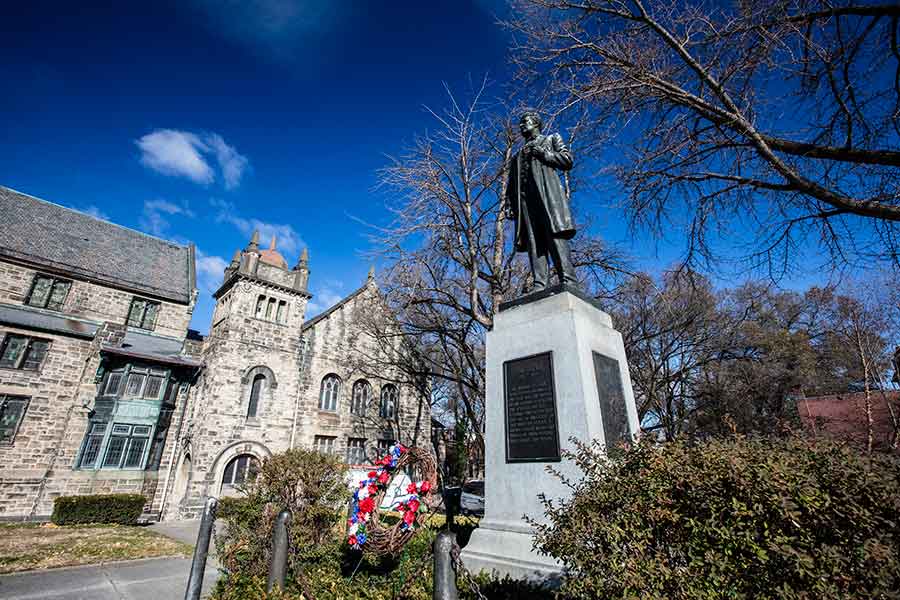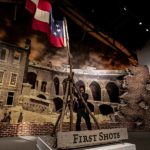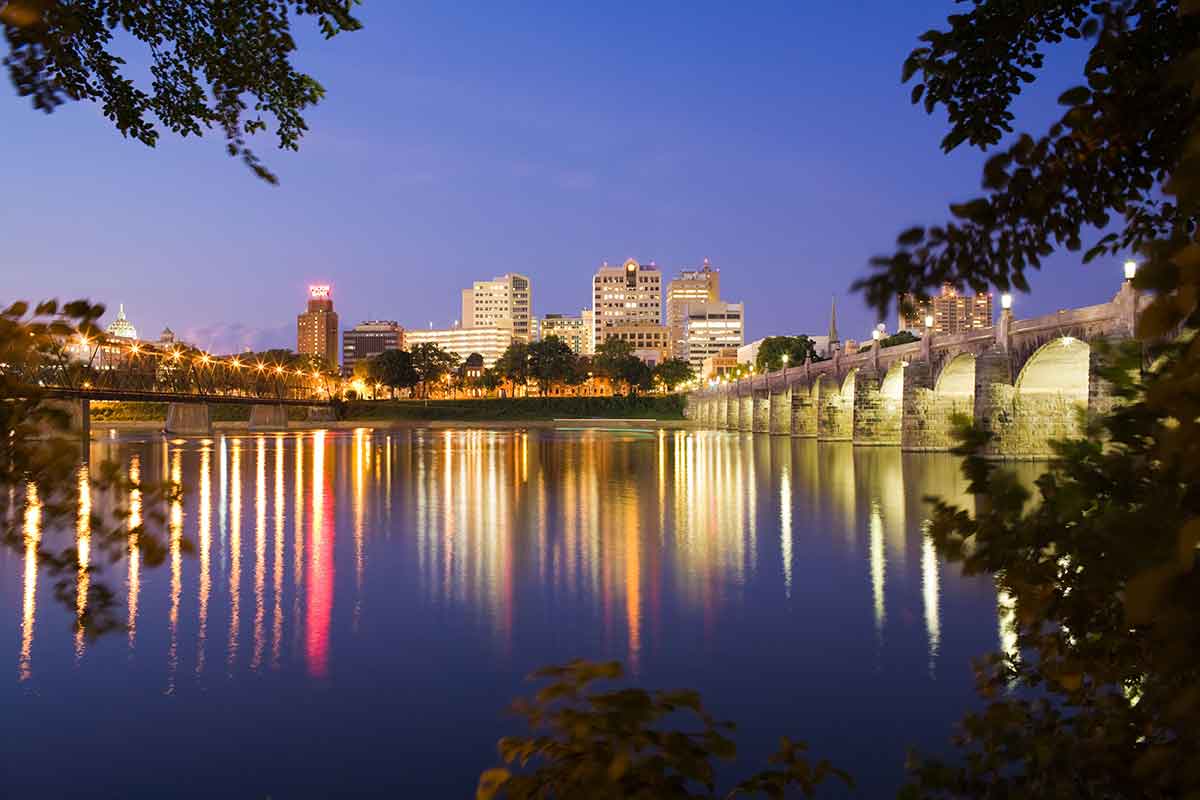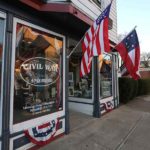Harrisburg, PA., was the heartbeat of a state that produced much-needed men and materiel for the Union. From the capital, strategically located in the interior of the commonwealth, Republican Governor Andrew G. Curtin, who served two 3-year terms beginning in 1861, capably guided Pennsylvania through the rebellion. Men and supplies flowed from all corners of the state to Harrisburg, then proceeded on rail lines to the front. In 1863, during the Gettysburg Campaign, Southern troops came within cannon shot of Harrisburg. In late June, Confederate General Richard S. Ewell’s Corps menaced the capital from two directions. Federal forces hastily constructed earthworks on high ground west of the city, at present-day Lemoyne, and Ewell’s skirmishers engaged Union militia near Oyster Point on June 28 and 29. One day later, grayclad cavalry sparred with Federal units near Sporting Hill, west of Camp Hill. The threat to Harrisburg abated after the Army of Northern Virginia was ordered to concentrate near Gettysburg, 38 miles to the southwest. The skirmishes near the city were the northernmost Confederate advance during the campaign. Harrisburg’s rich Civil War history is preserved in many forms in and around the capital, accessible to see and experience by the public. – Steve T. Phan
In Honor of the Gov
Named in honor of war Governor Andrew G. Curtin, Camp Curtin was a critical concentration point and training ground for Pennsylvania soldiers during the war. Over 300,000 men trained there, then headed to their wartime destinies. Camp Curtin Memorial-Mitchell United Methodist Church (ccmmumc.susumc.org) and Camp Curtin Park also commemorate the capital’s Civil War history with historic markers and a statue to its namesake. explorepahistory.com
Keeper of Keystone Relics
The State Museum of Pennsylvania, located adjacent to the state capitol, preserves and interprets the commonwealth’s rich history and culture. The museum includes the exhibit, “Objects of Valor: Commemorating the Civil War in Pennsylvania,” which displays items belonging to Maj. Gen. John W. Geary, artworks, flags, and soldier items of the state that sent the second-largest contingent of troops to the United States forces. statemuseumpa.org
Fort Couch
During the Gettysburg Campaign, Harrisburg was in the direct path of the Confederate invasion of Pennsylvania, and Union forces fortified the heights surrounding the state capital. Department of the Susquehanna commander Maj. Gen. Darius N. Couch ordered the rapid construction of earthen forts on Hummel Heights (modern-day Washington Heights in Lemoyne Borough). A mixture of soldiers, local civilians, and African Americans built Fort Washington and Fort Couch. The forts never saw action. Today, remnants of Fort Couch are preserved. A historic marker and monument erected by the Camp Curtin Historical Society commemorate the earthworks. explorepahistory.com
Cool Stuff
The National Civil War Museum is a must-see, and “portrays the entire story of the American Civil War preserved in equally balanced presentations….” The museum’s vast collection includes more than 24,000 items, and nearly 900 artifacts are on display. Robert E. Lee’s Bible, objects belonging to Union commanders Ulysses S. Grant and George Greene, and Stonewall Jackson’s gauntlet are among museum CEO Wayne Motts’ favorite items.
Blue and Some Gray
Harrisburg Cemetery inters notable Civil War figures like Simon Cameron, Lincoln’s first secretary of war; Maj. Gen. John W. Geary; Major Charles C. Davis, a Medal of Honor recipient with the 7th Pennsylvania Cavalry; and more than 150 Civil War–related burials. Included in this number are 11 Confederate soldiers who succumbed to Gettysburg wounds.
[quote style=”boxed”]“On the 16th of June [1863], I received orders…directing me to send as many regiments as possible to Harrisburg, to assist in repelling the invasion of Pennsylvania by the Rebels.” Maj. Gen. Charles W. Sandford, New York State National Guard[/quote]
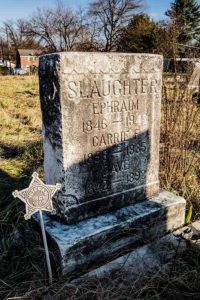
Named for the 16th
Lincoln Cemetery was founded by Wesley Union Church in 1877 as a burial ground for Harrisburg’s African-American population, which was active in the prewar Underground Railroad. A notable list of Civil War burials can be found at Lincoln Cemetery, including African-American soldiers Sergeant Horace Bennett of the 54th Massachusetts Infantry and Ephraim Slaughter of the 37th USCT, who was Harrisburg’s last surviving Civil War veteran (1846-1943). Other interments include Thomas Morris Chester, war correspondent and recruiter for the 54th and 55th Massachusetts, and William Howard Day, black abolitionist, editor, and minister.
State Capitol
Governor Curtin is commemorated with a statue adorning the capitol’s rotunda and is featured in the building’s largest mural, “The Apotheosis of Pennsylvania,” by Edwin Austin Abbey, located in the house chamber. On the exterior grounds, an equestrian monument to Maj. Gen. John F. Hartranft, Medal of Honor recipient and 17th governor of Pennsylvania, was unveiled in 1899. capitol.com
Skirmishes at Oyster Point
On the outskirts of Harrisburg, near the town of Camp Hill, Federal militia engaged the advanced elements of the Army of Northern Virginia under the command of General Albert G. Jenkins at Oyster Point, the crossroads of the Carlisle Pike and Trindle Springs Road, on June 28-29, 1863. Confederate artillery lobbed shells at the Union defenders from the Peace Church (historicpeacechurch.org) and the Samuel Albright House in Camp Hill at N. 36th St. After inconclusive skirmishing, Federal defenders withdrew east toward the Susquehanna River.
Temporary Housing
Jenkins pushed his cavalry brigade east to reconnoiter the defenses of Harrisburg after the skirmishes at Oyster Point. He chose as his headquarters the Rupp House at 5115 E. Trindle Rd., in Mechanicsburg, a stone structure built in 1773. A heavy skirmish erupted on June 30 with Union militia along the Carlisle Pike near Sporting Hill, leaving 16-20 dead. Jenkins withdrew in the late evening when Ewell’s Corps was recalled.
Buy Local
Civil War and More is a Mechanicsburg bookstore opened in 2001 to educate the public on the history of the Confederate threat to Harrisburg. The store stocks more than 1,000 different titles covering the span of the conflict, including signed author copies. Owner and operator Jim Schmick is cofounder of the Camp Curtin Historical Society and Civil War Roundtable. The organization has placed monuments and waysides pertaining to the invasion around the region. civilwarandmore.com

